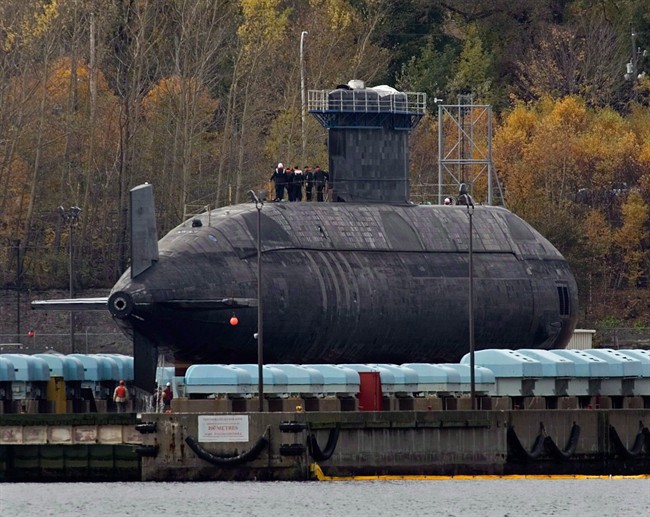More information on the long-term health effects of one of the “darkest hours in the history of Canadian submarine service” will be released on Thursday.

Several crewmembers were injured and one died as a result of an electrical fire aboard HMCS Chicoutimi in October 2004 as it was in transit between Faslane, Scotland and Halifax, N.S., during its first Canadian mission.
Now, 15 years later, the Department of National Defense and the Canadian Armed Forces are set to release their findings of the long-term health effects impacting those involved in the fire.
A number of crewmembers expressed concern in the years after the fire that they’d been exposed to carcinogens that had affected their long-term health.
HMCS Chicoutimi was acquired from the Royal Navy as part of a plan announced in 1998 by Jean Chretien’s Liberal government to purchase four surplus diesel-electric boats.

Get daily National news
The poor condition of the mothballed submarines — they were rusty, prone to flooding and one had a dented hull — tarnished the reputation of the boats.
But it was the fire on board the Chicoutimi, responsible for the death of Lt. Chris Saunders, that drew the most criticism.
A subsequent military board of inquiry found that an open hatch allowed seawater from a rogue wave to wash down the conning tower and inundate poorly insulated high-voltage wires, triggering the fire. The 700-page report blamed no one for the tragedy.
WATCH: Few leads as sabotaged Canadian Coast Guard vessel remains unrepaired in Nova Scotia

The study was designed to systematically document and describe the health effects associated with exposure to the fire onboard HMCS Chicoutimi.
Participants in the study include 56 crewmembers and 42 members of the team who looked after the submarine when it returned to Faslane, Scotland after the fire. As a control group, 152 submariners were randomly selected.
The first stage of the study analyzed the health of all participants in the five years before the fire and the five years afterward.
The Canadian Armed Forces says a draft report of the study was completed in 2015, but due to “several factors,” including insufficient tracking and follow up, the report wasn’t finalized until January 2019.
The plans for the second phase of the study will also be released on Thursday.
— With files from The Canadian Press
- One of Canada’s first convicted terrorists shows ‘no signs of de-radicalization’
- Tariff exemptions were Canada’s salvation in 2025. Why they’re at risk in 2026
- Jim Beam halting some bourbon production as exports fall amid U.S. tariffs
- As H3N2 spreads, can you still get your flu shot before holiday gatherings?








Comments